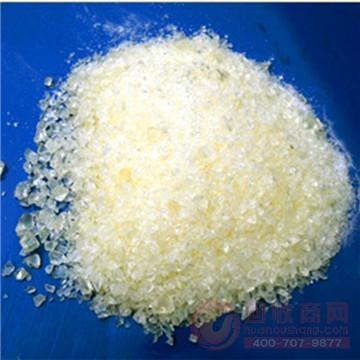
First, epoxy Resin introduction
Epoxy resin is a fast-growing resin variety, and there are many different types, and new varieties are constantly appearing. There are many methods for classifying epoxy resins.
Second, epoxy resin classification:
1 According to its chemical structure and the combination of epoxy groups, it is roughly divided into five major industries. This classification method is useful for understanding and mastering the behavior of the epoxy resin during curing and the properties of the cured product. (1) glycidyl ethers, (2) glycidyl esters, (3) glycidylamines, (4) aliphatic epoxy compounds, and (5) alicyclic epoxy compounds. In addition, there are mixed epoxy resins, that is, compounds having two different types of epoxy groups in the molecular structure. For example: TDE-85 epoxy tree, aFG-90 epoxy resin.
2 It is also possible to divide the functional group (epoxy group) into a bifunctional epoxy resin and a polyfunctional epoxy resin. For reactive resins, the effect of the number of functional groups is very important.
3 It can also be divided into liquid epoxy resin and solid epoxy resin according to the state of the resin at room temperature. This is important in actual use. Liquid resins are used as castables, solventless adhesives and coatings. Solid resin can be used in powder coatings and solid molding materials. The solid epoxy resin mentioned here is not achieved, the b-stage epoxy resin curing system, nor the C-stage epoxy resin cured product (cured resin), but a simple ring with a relatively large molecular mass. Oxygen resin is a thermoplastic solid oligomer.
Synthetic Cryolite is a white crystalline powder or a sandy-size granularity, and a pinkish crystalline powder or a sandy-size granularity as well. Sp.gr.2.95-3.01g/cm3, melting point about 1000°C, specific heat 1.056j/g°C at 18-100°C. It`s slightly soluble in water, but insoluble in anhydrous hydrogen fluoride. The content of its crystal water will be decreased while the increasing of the molecular ratio, therefore its loss on ignition will be also decreased while the increasing of the molecular ratio. After the paste of synthetic cryolite with different molecular ratio dehydrates, the loss on ignition at 800°C will appear 10.34%, 6.22% and 2.56% when the molecular ratio reaches 1.74, 2.14 and 2.63 reactively.
Uses:
It`s mainly used as a flux in the aluminum smelting by fused-salt electrolysis; also an opalizer in the manufacture of enamel; an opacifier and auxiliary solvent of glass and enamel; an insecticide of crops; a flux in aluminum alloy casting; and in the production of ferrous alloy and effervescing steel; as well as a wear-resistant filler for resin and rubber-boned Abrasive wheels.
Synthetic Cryolite
Synthetic Cryolite,Synthetic Cryolite Abrasive,Sodium Aluminum Hexafluoride,Industry Grade Synthetic Cryolite
Yucheng Jinhe Industrial Co.,Ltd , https://www.jinhetec.com